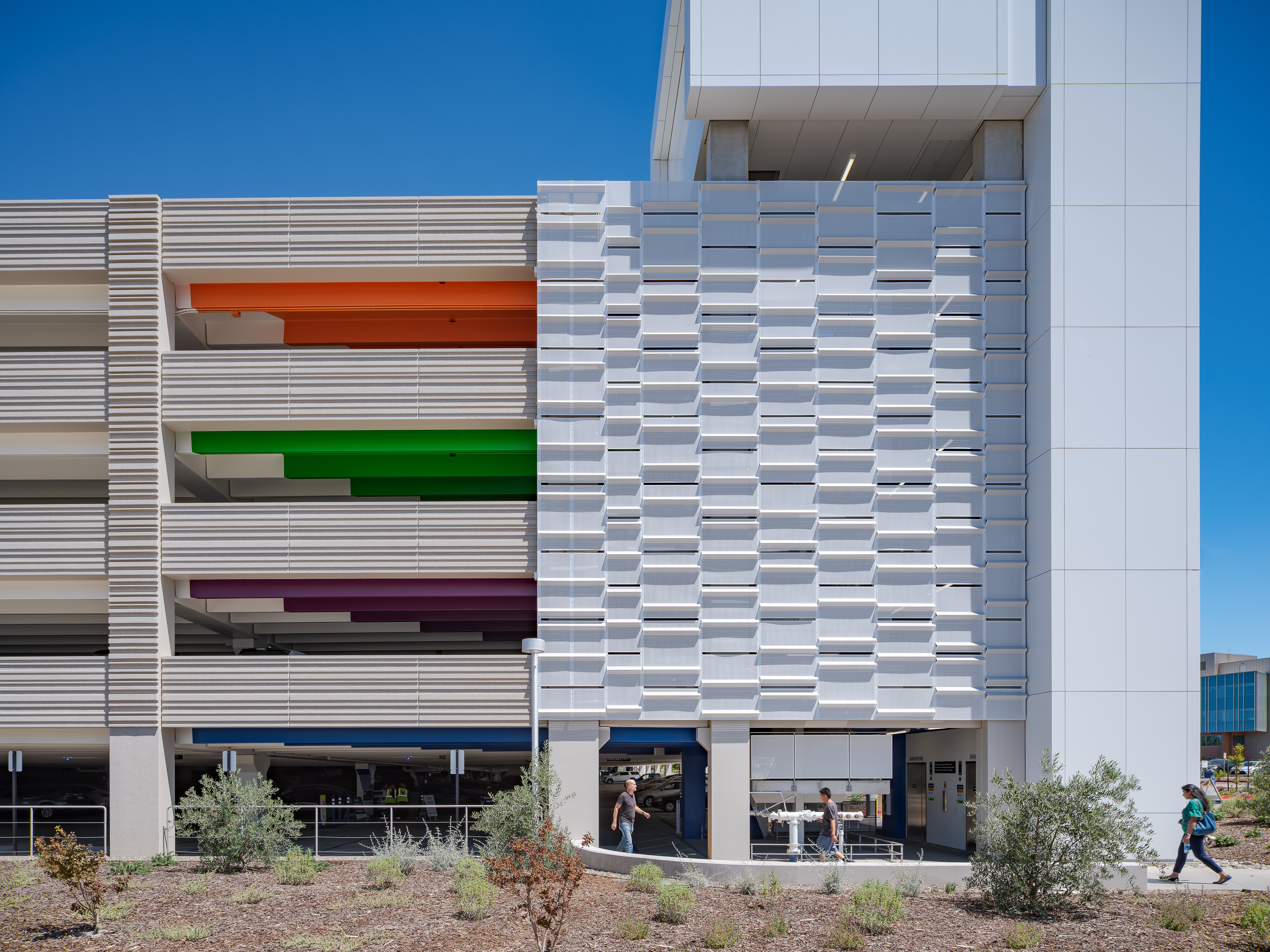Creating Safe Spaces: Elevating Women’s Safety in Parking and Transportation
By Jade Neville
Women face unique safety challenges in public spaces, from poorly lit parking lots to unmonitored transit hubs that often foster a sense of vulnerability. Despite strides toward creating safer environments, many women still feel unsafe navigating parking facilities and transportation systems, especially at night. Across the U.K., safety advocates and industry leaders are working to address these issues and ensure public spaces are designed with women’s safety in mind.
As chair of the Women’s Safety Working Group, a role I am passionate about, I’ve witnessed the profound effect that even small changes can have on enhancing women’s safety and peace of mind. This group is part of Women in Transport, a U.K.-based professional network and advocacy group dedicated to advancing diversity, equity, and inclusion within the transport sector. Women in Transport provides a platform for women to connect, learn, and develop their careers in an industry that has traditionally been male dominated. The Women’s Safety Working Group works tirelessly to bring women’s safety issues to the forefront, pushing for policy changes, infrastructure improvements, and initiatives that support safer journeys for all women.
Understanding the Safety Challenges Women Face
The need for safer public spaces is underscored by concerning statistics. According to Transport for London, nearly 55% of women feel unsafe using public transport at night, and 53% of women in England have experienced harassment in public spaces, ranging from parking lots to transit stations. These numbers likely represent only a fraction of actual incidents, as many go unreported due to fear or mistrust in the reporting process.
These statistics reveal the pressing need for targeted safety initiatives in parking and transportation. Women across the country have called for these spaces to be redesigned and better monitored to address safety concerns that disproportionately affect them.
The Role of Infrastructure in Women’s Safety
In spaces like parking facilities, small but critical changes — such as improved lighting, clear signage, and emergency call systems — can make a tremendous difference. According to the British Parking Association's 2022 report, “The Future of Parking: Safety, Sustainability, and Innovation,” parking areas with enhanced lighting and visibility saw a 25% reduction in reported safety concerns.
These findings demonstrate that strategic improvements to infrastructure can significantly enhance women’s comfort and security in public spaces. Advocates continue to call on transportation authorities and private organizations to adopt these design principles across parking facilities, transit hubs, and public spaces.
Women Leaders in Transportation Safety
Innovative technological solutions also play a pivotal role in addressing women’s safety concerns. Emma Kay, founder and chief marketing officer of WalkSafe Ltd., co-created the WalkSafe app, which enables users in the U.K. to track safer walking routes. Tools like WalkSafe empower women by offering live updates and safety insights, enabling informed decisions about their surroundings.
Similarly, Jillian Kowalchuk’s Safe & the City app is designed to enhance personal safety in urban environments. The app provides:
• Emergency services access — quick access to emergency services and nearby safe locations like hospitals or partner shops
• Real-time notifications — updates from law enforcement about potential hazards to help users plan safer routes
• Community-driven routes — user-rated walking and public transit paths for increased reliability and security
• Incident reporting — tools to report safety incidents in real-time, fostering community-wide awareness
These apps reflect how technology can enhance women’s safety and empower them to navigate public spaces more confidently.
Changing Safety Culture and Encouraging Reporting
Increased awareness around women’s safety has led to a rise in reporting incidents. From 2017 to 2022, reported cases of harassment and assault in transit spaces in London rose by more than 30%, according to data from the British Transport Police. This rise is not necessarily due to a higher rate of incidents but reflects growing trust in reporting systems fuelled by awareness campaigns.
Despite these improvements, safety remains a pervasive concern. A 2022 YouGov survey revealed that 78% of women in the U.K. still feel unsafe in parking facilities and on public transport at night. These statistics underscore the urgent need to strengthen reporting systems, improve safety infrastructure, and foster a culture where women feel supported to speak out.
Call to Action
Making public spaces safer for women requires a collective effort from parking and transportation authorities, local governments, and industry leaders. Advocates call for:
1. Increased investment in safety infrastructure — improved lighting, CCTV coverage, and emergency systems in parking facilities and transit hubs
2. Ongoing safety audits and research — identifying high-risk areas through regular reviews and allocating resources effectively
3. Promoting a culture of reporting — encouraging women to report incidents and building trust within communities
4. Collaboration with advocacy groups — partnering with organizations to ensure women’s voices and experiences inform planning decisions.
Conclusion
Efforts to improve the safety of parking and transportation systems are essential for creating inclusive public spaces. By championing user-centred design, enhancing reporting systems, and investing in innovative technologies, advocates are making a tangible impact on the lives of women across the U.K. Together, we can create a future where every woman feels secure and confident in every public space she navigates.
Jade Neville is the market engagement strategist at Trellint. She can be reached at jade.neville@trellint.com.












